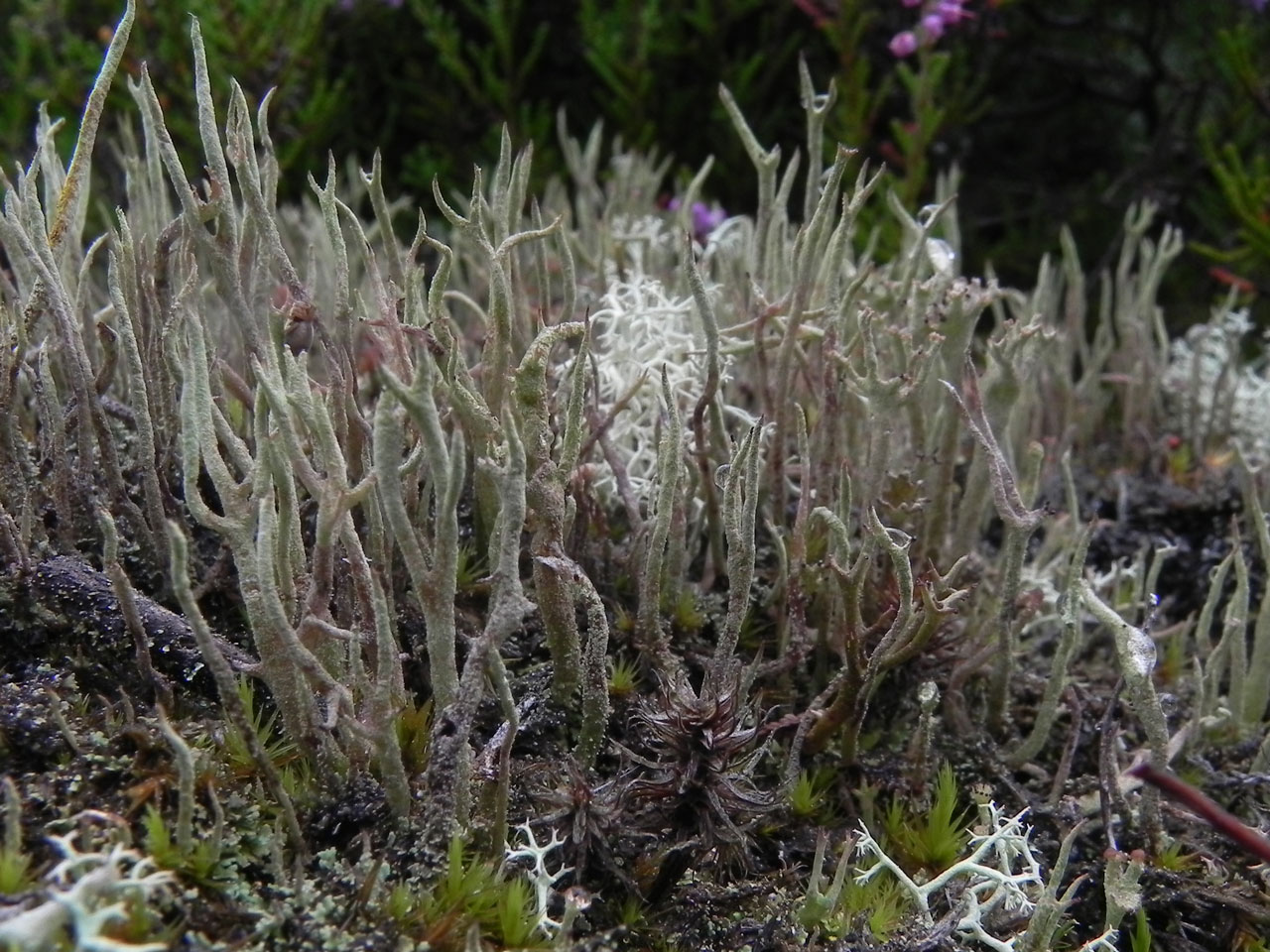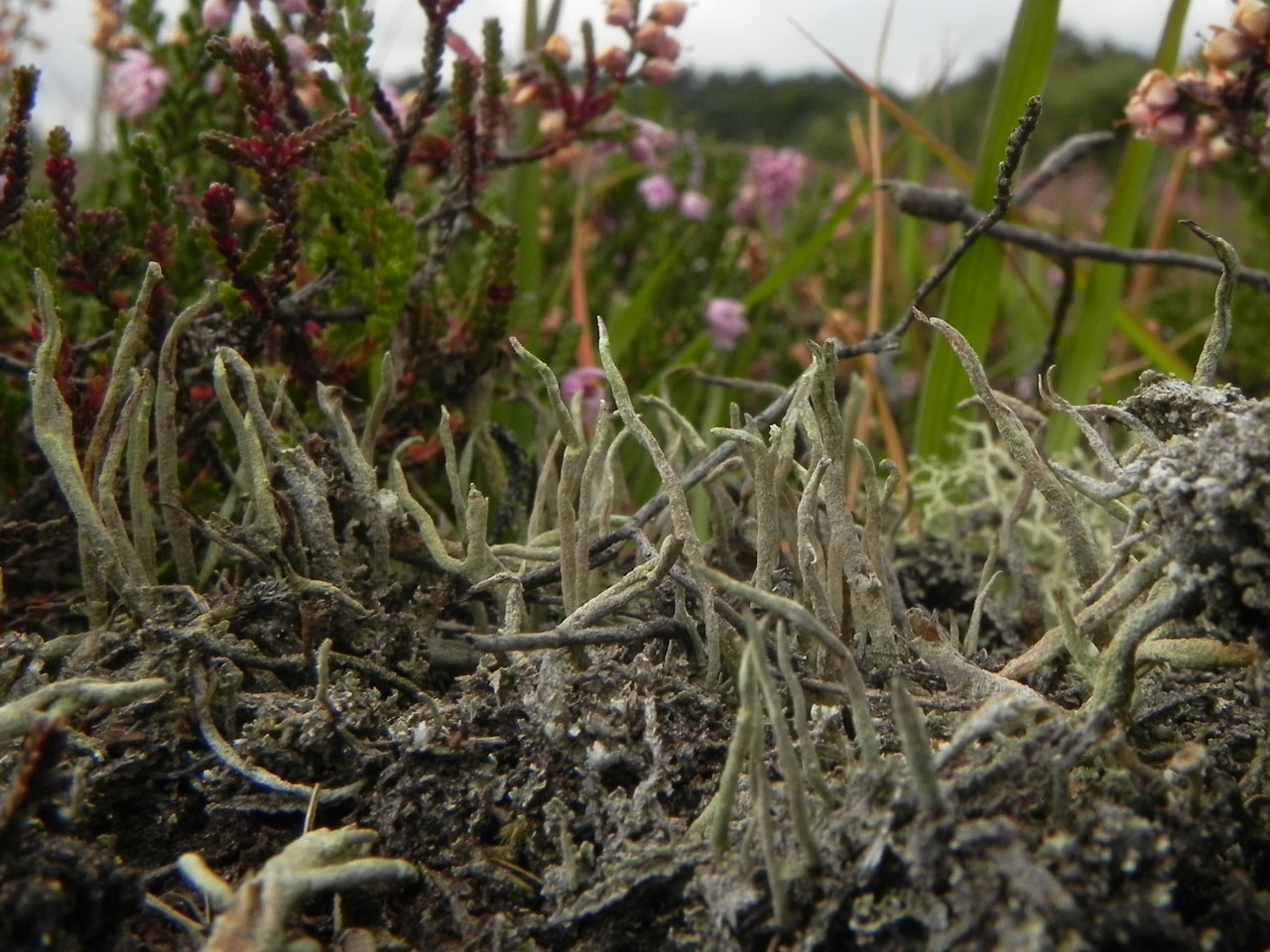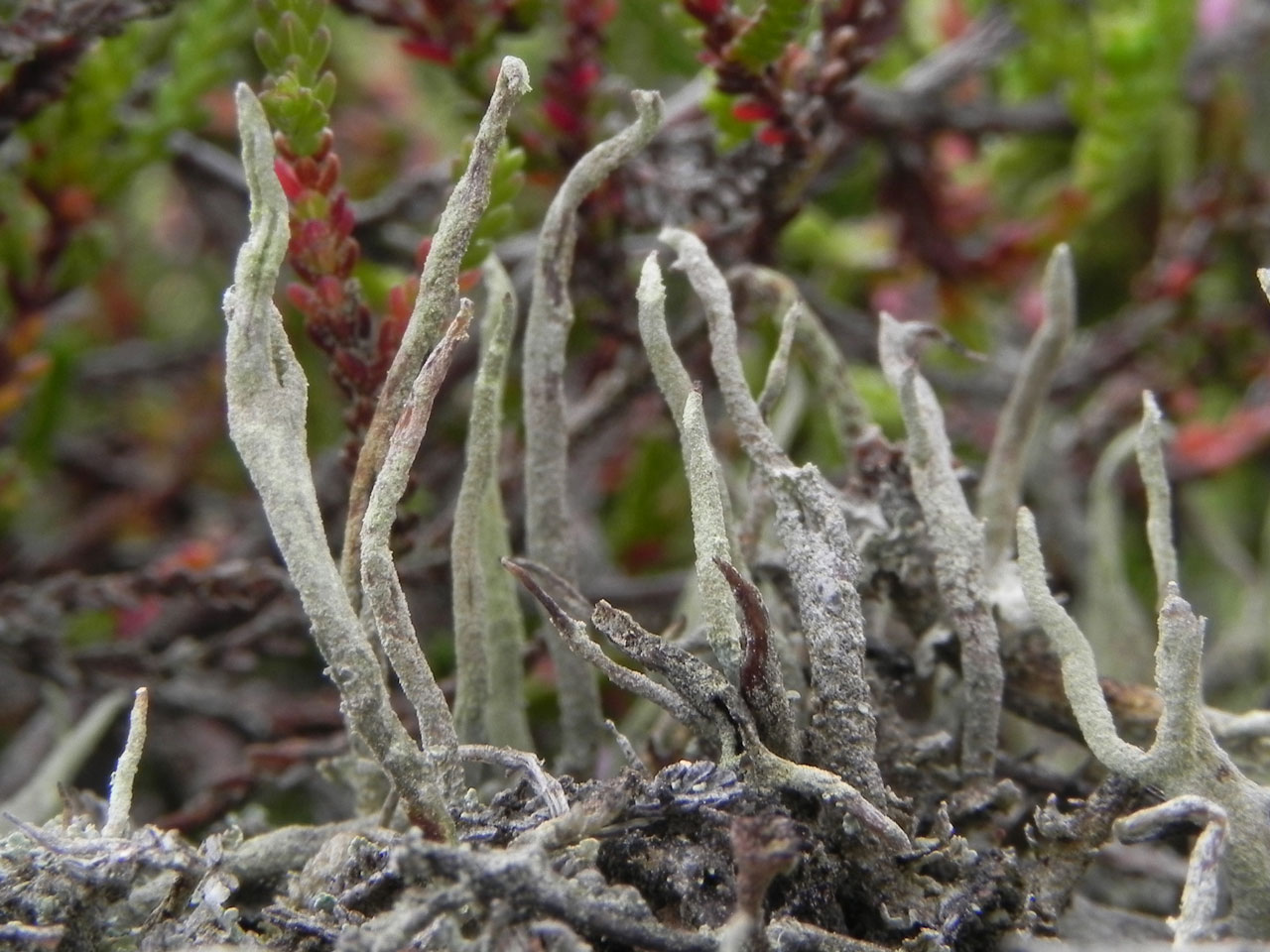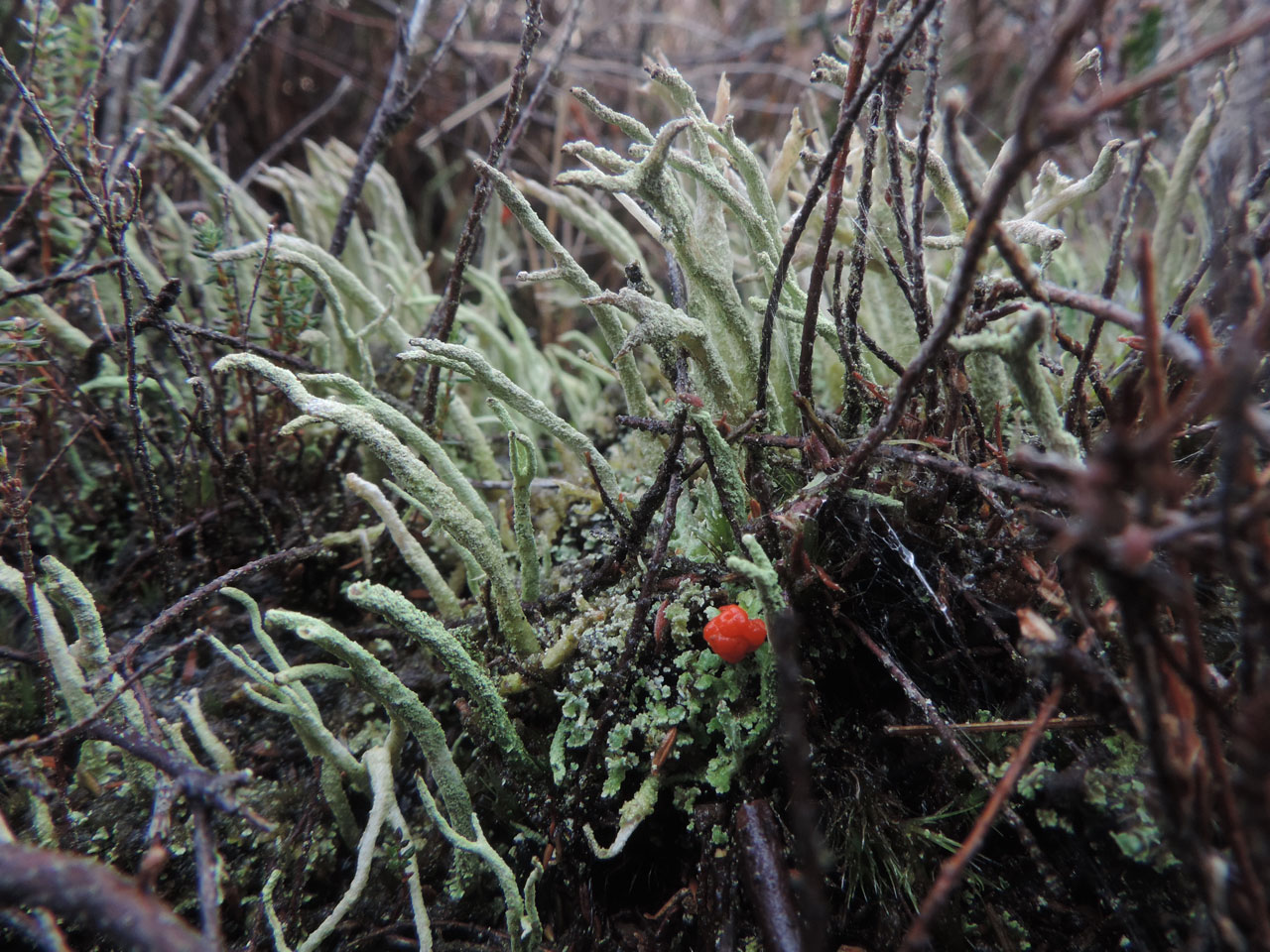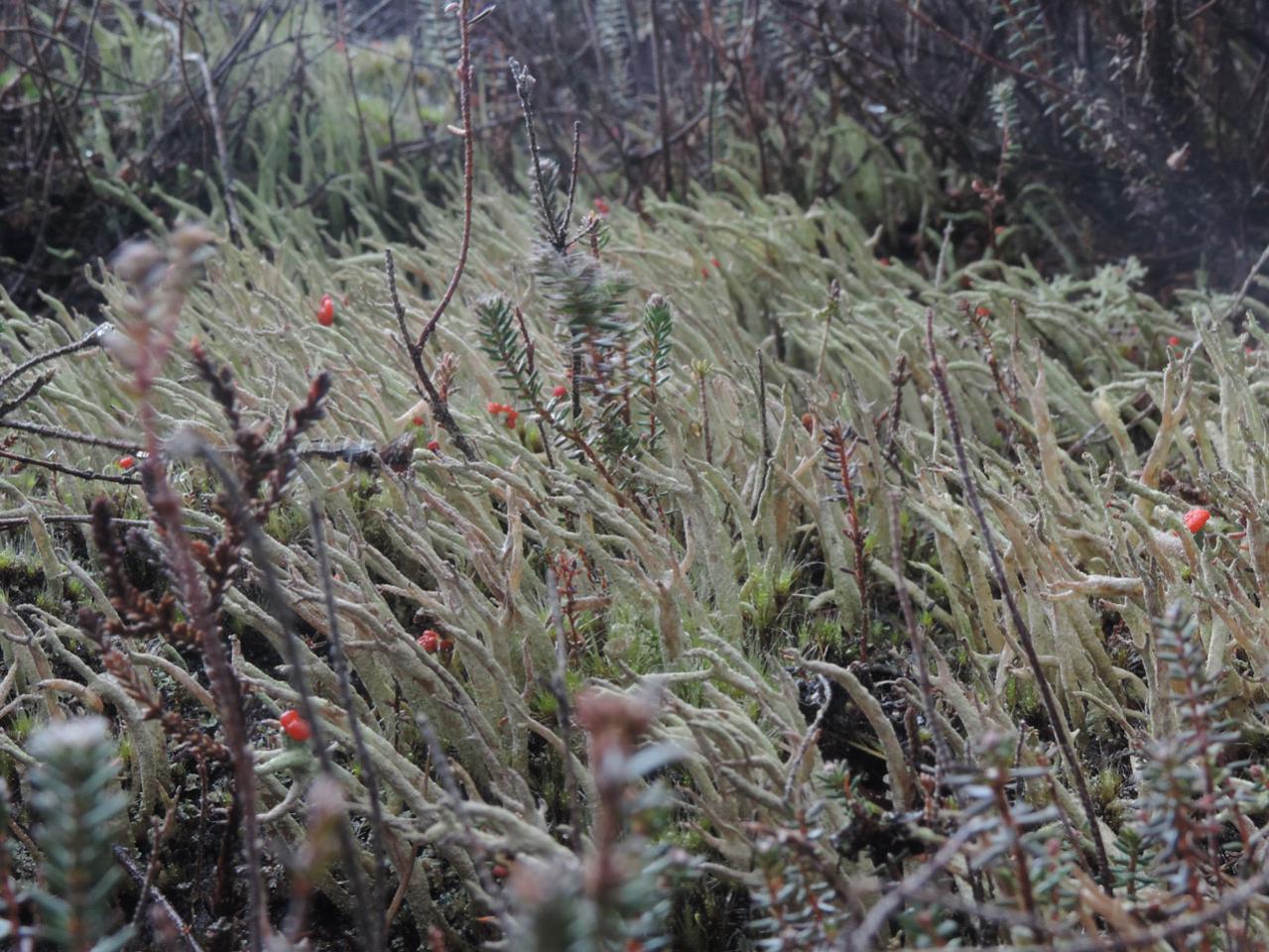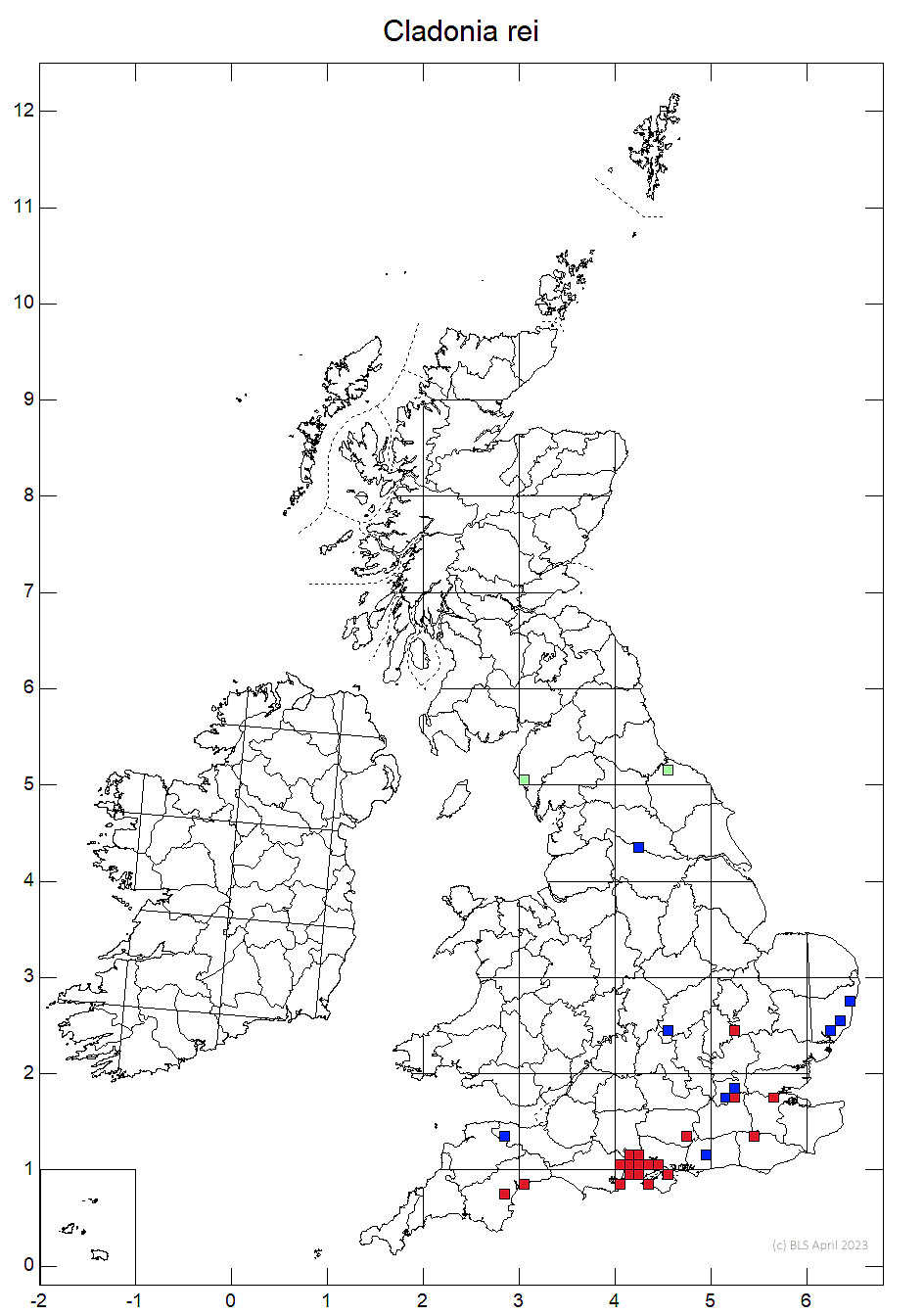A brownish moderately sized Heathtail Cladonia which is partly to entirely farinose to coarsely granular-sorediate and lacks cups. Not very distinctive, but the often somewhat contorted podetia are a useful feature to look out for. The key identification features are the chemistry with homosekikaic producing a white UV+ fluorescence, which is only easily seen from the podetia medulla or the undersides of the squamules and a slow Pd+ orange spot test. Care is needed to separate this species from C. glauca, C. subulata or Cladonia coniocraea. Probably rather over looked but certainly uncommon, largely recorded from S. and E. England and found in high quality heathland as well as acid woodland and wasteland.
Like C. glauca or C. subulata, but dirty or drab green-brown. Podetia often contorted, rarely branched 1-3 times especially towards the apices, often in part ± entirely farinose to coarsely granular-sorediate, sometimes with minute developing squamules, with a
corticate and sometimes squamulose area at the base that sometimes extends towards the apices. Occasional cups poorly defined, irregular, often with 1-3 marginal terete extensions. Thallus C–, K–, KC–, Pd– or Pd+ slowly yellow-orange, UV± white (homosekikaic and ± fumarprotocetraric, sekikaic acids).
The fluorescence is only seen in the medulla, and, unlike C. glauca is not produced by the soralia. The fluorescence is bright and obvious but the podetia needs to be damaged or scrapped to expose the medulla for it to be seen. The underside of squamules is however a good place to see the fluorescence with less effort.
Cladonia coniocraea differs by its small, abruptly expanded, ± regular cups which are barely wider than the podetia and is UV– (but beware of mistaking reflections from contaminant white light in the UV light from the medulla for fluorescence) and Pd+ quickly rust-red. C. rei was considered by some to be a chemical race of C. subulata, but molecular data (Dolnik et al. 2010) show that they are not closely related. Cladonia rei never has the small cups with antler like proliferations shown by mature C. subulata which is also UV– and Pd+ quickly rust-red. C. glauca is vividly UV+ white (squamatic acid) seen on the soredia, or is occasionally K+ yellow, and can also some times be distinguished by a narrow, extended longitudinal slit occurring midway on some podetia.
The habitats were given in the LGBI2 as mineral soil in not very acid woodland and wasteland but it has since also found in high quality acid heaths, where it can occasionally be abundant.

Probably rather over looked but certainly uncommon and largely recorded from S. and E. England.
Listed as Near Threatened in the British Red list, which would reflect its entirely lowland known distribution, where threats from habitat loss are high.
Britain: Near Threatened
Dolnik, C., Beck, A. & Zarabska, D. (2010). Distinction of Cladonia rei and C. subulata based on molecular, chemical and morphological characteristics. Lichenologist 42: 373–386. Link
Pino-Bodas, R., Sanderson, N., Cannon, P., Aptroot, A., Coppins, B., Orange, A. & Simkin, J. (2021). Lecanorales: Cladoniaceae, including the genera Cladonia, Pilophorus and Pycnothelia. Revisions of British and Irish Lichens 19: 1-45. Link
Text by Neil A Sanderson, based on Pino-Bodas et al (2021)
